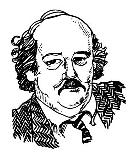(Syndicated to Kansas newspapers Oct. 12, 2015)
 Sometime, probably mid-November, we Statehouse habitués will get the piece of information that will shape the upcoming election-year session of the Legislature.
Sometime, probably mid-November, we Statehouse habitués will get the piece of information that will shape the upcoming election-year session of the Legislature.
That’s the mid-November report of the Kansas Consensus Revenue Estimating Group. That group of economists and state agency fiscal staffers will release its estimate of the state’s revenues for the remainder of this fiscal year and the prospects for the upcoming fiscal year that starts July 1, 2016.
The report is key to nearly everything that happens in state government, because that estimate will be the basis for Gov. Sam Brownback to touch up—or not—his budget for the rest of this year and next, and it will define just what the Kansas Legislature does next session in the way of spending.
As those estimators get ready for their report—which could be as early as mid-November but is required to be made by Dec. 4—lawmakers are wondering just what sort of session they have ahead of them in the upcoming year when the entire House and Senate stand for re-election.
While the CREG estimate is just that, an estimate, lawmakers tend to see it as the truth and the light and the way, and if revenues fall short of those estimates, well, lawmakers have to do ugly things to the budget—like cutting programs—or ugly things to Kansans—like raising taxes.
If that estimate is lowered, it means it might be necessary for further cuts halfway into the current fiscal year.
So far, it looks like that reduction in estimate is inevitable.
Those taxes that lawmakers raised in July haven’t produced the revenue that they expected…so far, the state is about $61 million short of its projections and nobody’s very confident that things are going to turn around.
That $61 million shortfall so far reduced what was estimated to be a $73 million budget surplus into about $10 million. Some of those new taxes, say, the income tax increases (which actually are reductions in tax deductions), won’t show up until spring, but some of those raises—sales tax especially—aren’t producing what was predicted.
The governor helped the ending balance some, with cuts and shifts and such that may be worth $62 million which would boost the ending balance to that previously projected $70-million plus. Oh, and that shakily restored balance amounts to just over 1% of the state’s total $6.2 billion in planned spending.
While $70 million or so sounds like a lot of money, well, it just takes a heavier than normal snowfall this winter, a flood or two—or a school funding decision from the Kansas Supreme Court—and it’s gone. Ever go on a date with just 1 percent more money than the movie tickets cost? Of course not.
So that’s why the administration and legislators are nervous. For some—let’s say, conservative Republicans—if we could put a cuff on their biceps, we could probably pump water to the roof. For some—let’s say, moderate Republicans and Democrats—they’ll have a real-life issue to campaign against those who support Brownback’s tax cuts, or at least those who don’t apply to them or to a majority of voters in their reelection bids.
But, none of the political aspects of the budget rises to the level of the real problem of not having enough money to provide services that Kansans believe they are entitled to.
And, that’s where the anxiety comes from.
Brownback says no new taxes next session—which is a plus for conservatives seeking reelection—which means that if that revenue estimate is dropped, well, things get cut. Deciding what is cut in the way of spending becomes political, too. Do you cut services to the poor; do you quit repairing roads or shoveling snow or sending emergency crews?
That’s the anxiety and next month, probably, we’ll find out whether, politics aside, Kansans get the government and services they expect.
